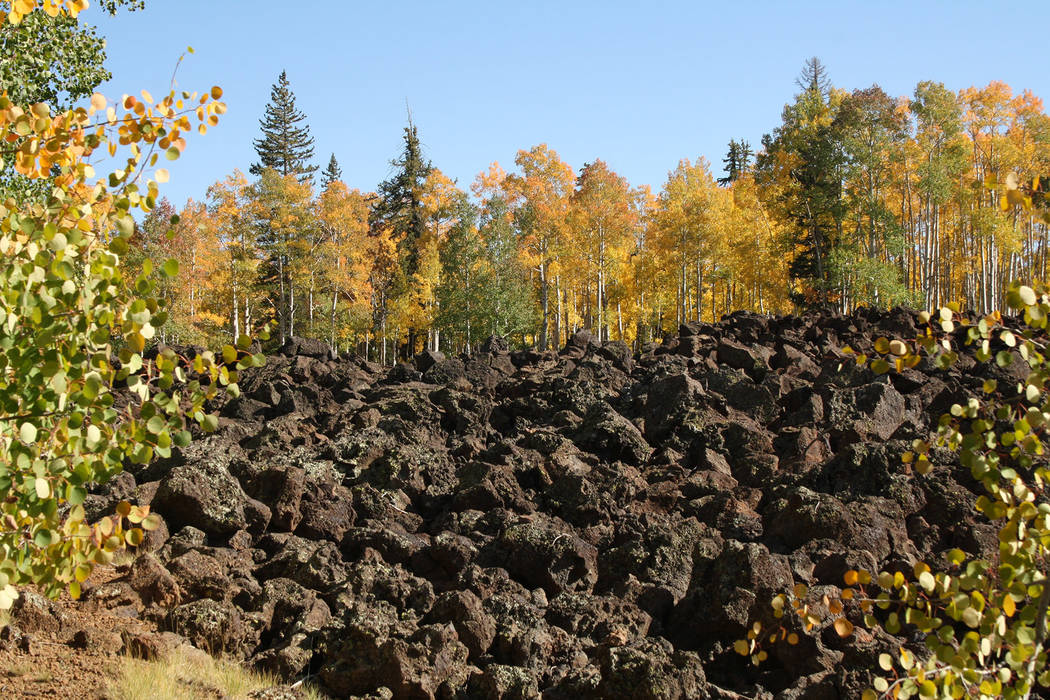
For Southern Nevadans who are looking to see some brilliant fall foliage, southern Utah is often the destination of choice. Here you can find a variation of elevations, so depending when you visit during the next couple of months, you will be able to find an area where the color is at its peak.
Right now the leaves have just started to change in the high-elevation areas. If you can get away this month, head up on Utah Route 14, about a 30-minute drive east of Cedar City, Utah, to the Markagunt Plateau. Home to Cedar Breaks National Monument, Brian Head, Navajo Lake, Panguitch Lake and Duck Creek Village, this is a wonderful destination to drive the network of scenic roads and hopefully take in some dazzling color.
Besides enjoying the foliage while driving around Cedar Breaks National Monument, there are several viewpoints along the main road to easily see into the vast natural amphitheater: 3 miles wide and 2,000 feet deep. It is full of hoodoos, spires and columns in colorful hues of red, pink, orange and purple stone and earth.
Even better though would be to take a short hike along the Alpine Pond Trail. It’s a good one for seeing the fall colors of the aspens set within the subalpine forest of bristlecone pines, fir and Englemann spruce. The 2-mile, double-loop trail can be started at either the Chessman Overlook or Alpine Pond trailheads along Highway 148, 1.6 miles and 2.6 miles, respectively, from the main entrance.
Weather on the Markagunt Plateau, at around 10,000 feet elevation, can be highly unpredictable this time of year; it could even snow. Dress warmly and be sure to pack a warm hat, gloves and appropriate shoes and socks.
If your schedule doesn’t allow you to travel up to the high elevations this month, you can find good color later as the foliage gradually peaks at lower elevations. The main canyon of Zion National Park, which boasts a rich riparian environment of many species, is an excellent place to enjoy color often starting toward the end of October and continuing through early November.
The best trail for leaf-peeping is often the Riverside Walk, a 2-mile round-trip paved trail that starts at the Temple of Siniwava shuttle stop. The trail meanders along the north fork of the Virgin River and is flanked by a variety of deciduous trees such as Fremont cottonwoods, bigtooth maple, velvet ash and box elder.
Of course, predicting the peak foliage time in any given place is an inexact science. While the dependable dwindling amount of daylight each day is a big factor, there are also many unpredictable factors in forecasting when the leaves will change and how vibrant the colors will be. Rainfall, wind and the amount of sugar the leaves have been able to manufacture are important. Ideally there should be cool, sunny days without a heavy frost over a prolonged period to get the brightest color.
For more information on the current fall foliage and planning a visit to the area, contact the Cedar City-Brian Head Tourism Bureau at 435-586-5124 or visit http://www.visitcedarcity.com.
Many of Deborah Wall’s columns have been compiled into books about hiking in the Southwest. She is also the author of “Great Hikes, a Cerca Country Guide” and a co-author of the book “Access For All, Seeing the Southwest With Limited Mobility.” Wall can be reached at Deborabus@aol.com.